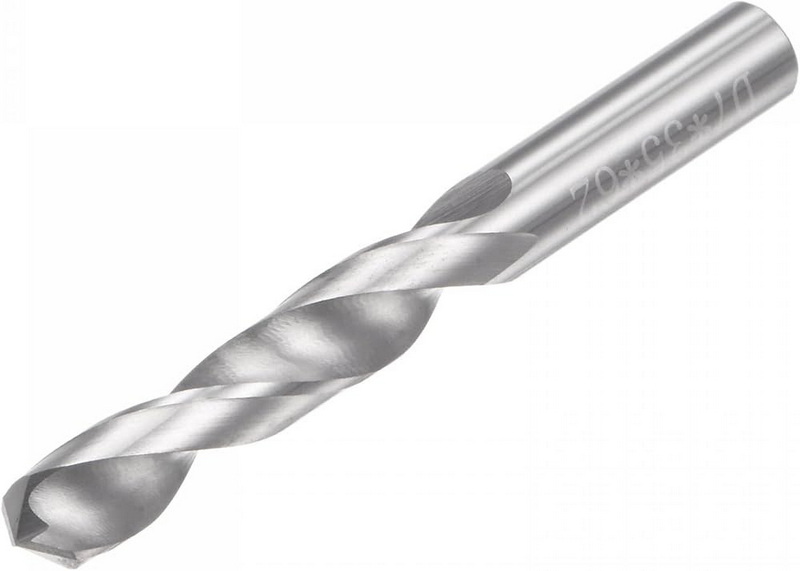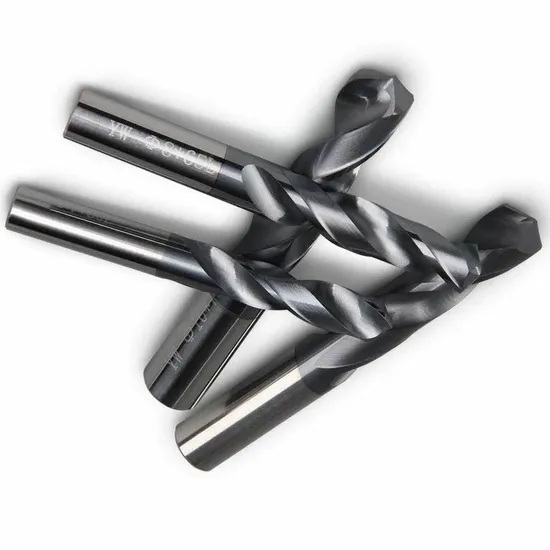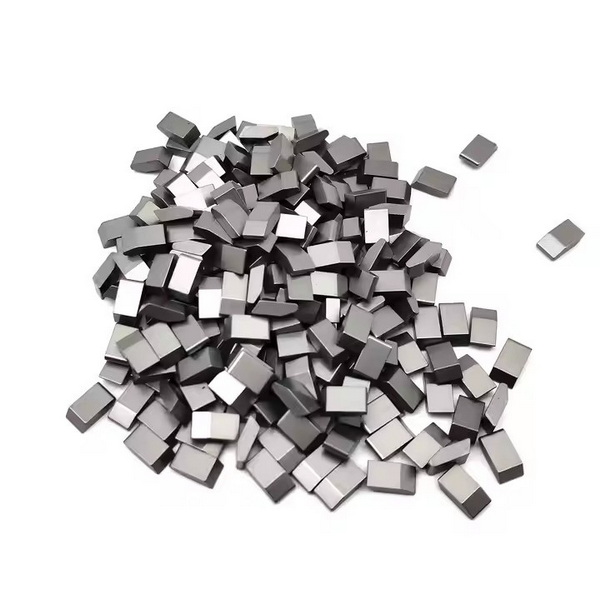Content Menu
● What is a Tungsten Carbide Drill Bit?
● Composition and Manufacturing
● Benefits of Using a Tungsten Carbide Drill Bit
● Materials Suitable for Drilling
● Applications Across Industries
● Tips for Maintaining Tungsten Carbide Drill Bits
● Economic Advantages
● Factors Affecting the Lifespan of a Tungsten Carbide Drill Bit
● Tungsten Carbide vs. Cobalt Drill Bits
● The Future of Tungsten Carbide Drill Bits
● Conclusion
● FAQ
>> 1. What is a tungsten carbide drill bit made of?
>> 2. What materials can I use a tungsten carbide drill bit on?
>> 3. How long will a tungsten carbide drill bit last?
>> 4. Are tungsten carbide drill bits more expensive than other types of drill bits?
>> 5. How should I maintain my tungsten carbide drill bit?
● Citations:
Embarking on a drilling project, whether you're a seasoned professional or a DIY enthusiast, requires the right tools to ensure precision, efficiency, and longevity. Among the myriad of drill bits available, a tungsten carbide drill bit stands out as a paragon of durability and performance. Known for their exceptional hardness and resistance to wear, these bits are engineered to tackle the toughest materials with ease. This article delves into the myriad benefits of a tungsten carbide drill bit, exploring their composition, applications, maintenance, and economic advantages.

What is a Tungsten Carbide Drill Bit?
A tungsten carbide drill bit is composed of a unique blend of tungsten and carbon atoms, creating a compound that is significantly harder than high-speed steel (HSS) alternatives[1]. This exceptional hardness allows a tungsten carbide drill bit to maintain its cutting edge for extended periods, even when subjected to the rigors of drilling through abrasive materials such as hardened metals, concrete, ceramic tile, and dense rock formations[1]. The superior durability of a tungsten carbide drill bit ensures that it remains effective over extended use, reducing the need for frequent replacements and minimizing downtime[1].
Composition and Manufacturing
The process of creating a tungsten carbide drill bit involves several key steps:
1. Mixing: Tungsten and carbon powders are meticulously blended to achieve a homogenous mixture.
2. Pressing: The powder mixture is then pressed into the desired shape using high-pressure molds.
3. Sintering: The shaped compacts are sintered at high temperatures, fusing the tungsten and carbon particles together to form a tungsten carbide drill bit.
4. Grinding: Precision grinding is employed to refine the cutting edges and ensure dimensional accuracy.
5. Coating (Optional): Some tungsten carbide drill bits may receive additional coatings, such as titanium nitride, to further enhance their hardness, wear resistance, and overall performance[3].
Benefits of Using a Tungsten Carbide Drill Bit
1. Exceptional Hardness: A tungsten carbide drill bit is renowned for its superior hardness, allowing it to effortlessly penetrate hard and abrasive materials[1].
2. Extended Lifespan: The robust construction of a tungsten carbide drill bit ensures a longer lifespan compared to conventional drill bits, reducing the need for frequent replacements[1]. With proper use and care, a carbide drill bit could last up to 10 times longer than its HSS counterpart[4].
3. Enhanced Efficiency: A tungsten carbide drill bit maintains a sharp cutting edge, enabling faster and more accurate drilling operations[1].
4. Versatility: A tungsten carbide drill bit is suitable for drilling a wide range of materials, including metals, masonry, wood, plastics, and composites[2].
5. Heat Resistance: A tungsten carbide drill bit exhibits remarkable heat resistance, minimizing the risk of deformation or damage during high-speed drilling[1].
6. Cost-Effectiveness: Despite the higher initial cost, a tungsten carbide drill bit offers significant long-term savings due to its extended lifespan and reduced downtime[1].
7. Environmental Benefits: By reducing waste and the need for frequent replacements, a tungsten carbide drill bit contributes to a more sustainable environment[1].
8. Precision: Carbide drill bits are particularly favored for their ability to maintain sharpness even after repeated use on hard materials, ensuring precise cuts[4].
Materials Suitable for Drilling
Tungsten carbide drill bits can cut through a variety of challenging materials[1]:
- Work-hardened metals such as stainless steel and cast iron[1].
- Non-ferrous metals like brass, bronze, copper, and aluminum[1].
- Hard non-metallic materials such as concrete, masonry, hardwoods, glass, stone, and ceramic tile[1].
- Tough composites and advanced materials used in various industries[1].
Applications Across Industries
Due to their exceptional hardness, durability, and precision, tungsten carbide drill bits are utilized across various industries[1]:
- Manufacturing: Essential for drilling precise, small-diameter holes in printed circuit boards (PCBs)[1].
- Construction and Mining: Effectively penetrate tough materials like concrete and stone, maintaining their cutting edge longer and enhancing productivity[1].
- Automotive and Machine Shops: Valued for their ability to drill through hard materials with precision and withstand high temperatures during high-speed operations[1].
- Oil and Gas: Prized for their durability and ability to handle high torque and abrasion, making them ideal for drilling through tough geological formations[1].
Tips for Maintaining Tungsten Carbide Drill Bits
To maximize the lifespan and performance of your tungsten carbide drill bit, consider the following maintenance tips:
1. Proper Storage: Store tungsten carbide drill bits in a dry, protective case to prevent damage and corrosion.
2. Regular Cleaning: After each use, clean the drill bit with a brush or cloth to remove debris and prevent buildup.
3. Appropriate Speed: Use the correct drilling speed for the material being drilled to minimize heat and wear.
4. Cutting Lubricant: When drilling dense materials, use a cutting lubricant to reduce friction and heat.
5. Avoid Excessive Pressure: Let the drill bit do the work, and avoid applying excessive pressure, which can cause the bit to dull or break.
6. Sharpening: Periodically sharpen tungsten carbide drill bits using a specialized grinding wheel to restore their cutting edge.

Economic Advantages
While a tungsten carbide drill bit may have a higher initial cost compared to other types of drill bits, the long-term economic advantages are undeniable[1]:
- Extended Lifespan: The superior durability of a tungsten carbide drill bit translates to fewer replacements, saving money in the long run[1].
- Reduced Downtime: The enhanced efficiency of a tungsten carbide drill bit minimizes downtime, allowing for faster project completion and increased productivity[1].
- Waste Reduction: The extended lifespan of a tungsten carbide drill bit reduces waste and the environmental impact associated with manufacturing and disposal[1].
- Recyclability: The recyclability of tungsten carbide adds to its cost-effectiveness, as scrap carbide can be collected and processed into new products[1].
Factors Affecting the Lifespan of a Tungsten Carbide Drill Bit
Several factors can influence the lifespan of a tungsten carbide drill bit[4]:
- Material being drilled: Harder materials will cause more wear on the drill bit.
- Drilling speed: Excessive speed can generate heat, reducing the bit's lifespan.
- Feed rate: Too much pressure can cause the bit to break or dull quickly.
- Lubrication: Using a cutting lubricant can reduce friction and heat, extending the bit's life.
- Storage and handling: Proper storage and handling can prevent damage and corrosion.
Tungsten Carbide vs. Cobalt Drill Bits
While both tungsten carbide drill bits and cobalt drill bits are known for their durability, there are key differences to consider[8]:
| Feature | Tungsten Carbide Drill Bits | Cobalt Drill Bits |
| Hardness | Significantly harder, making them ideal for drilling through very hard materials like hardened steel, cast iron, and ceramic tile[1]. | Harder than HSS but not as hard as tungsten carbide. |
| Heat Resistance | Excellent heat resistance, allowing for high-speed drilling without deformation[1]. | Good heat resistance but may not perform as well as tungsten carbide at very high temperatures. |
| Durability | Last longer than cobalt drill bits when used on hard materials[1]. | More flexible and less prone to chipping than tungsten carbide, making them suitable for softer metals. |
| Cost | More expensive due to the cost of materials and manufacturing processes[4]. | Less expensive than tungsten carbide drill bits. |
| Best Use Cases | Ideal for drilling very hard and abrasive materials, as well as applications requiring high precision and minimal wear[1]. | Suitable for drilling softer materials like mild steel and aluminum, as well as applications where flexibility and resistance to chipping are important[8]. |
The Future of Tungsten Carbide Drill Bits
As technology advances, the future of tungsten carbide drill bits looks promising. Ongoing research and development efforts are focused on enhancing their performance, durability, and versatility. Some potential advancements include:
- Improved coatings: Developing new coatings that provide even greater hardness, wear resistance, and heat resistance.
- Advanced geometries: Optimizing the drill bit's geometry to improve cutting efficiency and chip evacuation.
- Smart drill bits: Incorporating sensors and electronics to monitor drilling conditions and provide real-time feedback.
- Sustainable manufacturing: Implementing more sustainable manufacturing processes to reduce the environmental impact of tungsten carbide drill bit production.
Conclusion
In conclusion, a tungsten carbide drill bit is an indispensable tool for professionals and DIY enthusiasts alike. Their exceptional hardness, durability, and versatility make them ideal for a wide range of drilling applications. By understanding the composition, benefits, maintenance, and economic advantages of a tungsten carbide drill bit, you can make informed decisions and maximize the value of your investment. Whether you're drilling through hardened metals, concrete, or ceramic tile, a tungsten carbide drill bit will provide the performance and longevity you need to get the job done right.

FAQ
1. What is a tungsten carbide drill bit made of?
A tungsten carbide drill bit is made of a compound containing tungsten and carbon atoms[1]. Many also contain small amounts of other metals such as cobalt to improve their durability[7].
2. What materials can I use a tungsten carbide drill bit on?
Tungsten carbide drill bits are suitable for drilling through a wide range of materials, including work-hardened metals, non-ferrous materials, concrete, and ceramic tile[1][5].
3. How long will a tungsten carbide drill bit last?
With proper use and care, a carbide drill bit could last up to 10 times longer than its HSS counterpart[4].
4. Are tungsten carbide drill bits more expensive than other types of drill bits?
Yes, tungsten carbide drill bits are more expensive than steel or titanium coated drill bits, but they will last longer and stay sharper[3].
5. How should I maintain my tungsten carbide drill bit?
To maintain your tungsten carbide drill bit, store it in a dry, protective case, clean it after each use, use the correct drilling speed, apply a cutting lubricant when drilling dense materials, avoid excessive pressure, and periodically sharpen the bit using a specialized grinding wheel.
Citations:
[1] https://shop.machinemfg.com/tungsten-carbide-drill-bits-benefits-and-applications/
[2] https://huanatools.com/carbide-drill-bit-applications-and-drill-size-chart/
[3] http://www.tungsten-carbide.com.cn/carbide-drill-bits.html
[4] https://www.cobracarbide.com/what-are-carbide-drill-bits-good-for/
[5] https://www.drillbitwarehouse.com/what-materials-can-you-use-carbide-drill-bits-on/
[6] http://www.sklrd.cn/show.php?id=965
[7] https://ruwag.co.za/blogs/news/everything-you-need-to-know-about-carbide-drill-bits
[8] https://www.kennametal.com/us/en/resources/blog/metal-cutting/tungsten-carbide-versus-cobalt-drill-bits.html
















